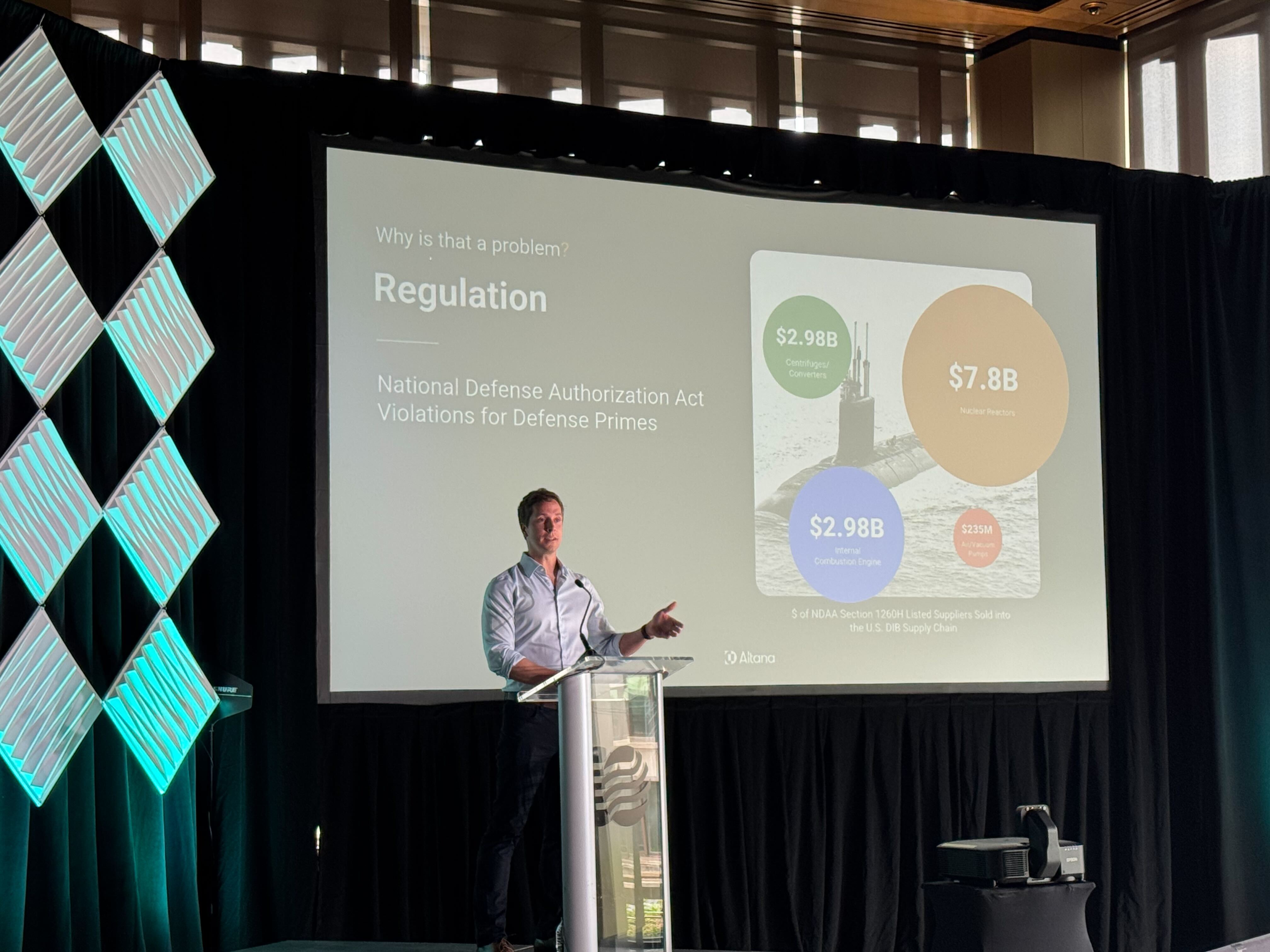A trusted trade program that is to goods what Global Entry and TSA PreCheck are for people “isn’t theoretical — we’ve been doing it,” Altana CEO and co-founder Evan Smith told a crowd of automotive OEMs and suppliers and public officials in Detroit at the Re-Industrialize conference.
“For decades, we’ve optimized our supply chains for outsourcing — driving down costs, pushing production abroad. And the unintended consequences of that outsourcing are why we’re all here today. But we can’t solve those problems unless we understand them as value chain problems.
“We're connecting these entire value chains through what we call a Product Passport, which
connects buyers and suppliers where my output is your input and your output is their input and so on. And we even connect those passports directly into the U .S. Customs & Border Protection agency. So what we're building is a system for global entry or TSA pre-check for your goods. And that's not theoretical. We've been doing that over the last seven months. We've been pre-clearing and pre-validating the goods coming into the United States.”
Evan listed five domains that must be treated as network problems:
Security
Our most important industries rely heavily on China for essential inputs — most critically, for permanent magnets and critical minerals. All the autonomy and advanced electronics we’re discussing today? They operate with the permission of China. This isn’t a theoretical issue — it’s a current crisis. Assembly lines in Michigan are shut down due to Chinese export controls on those materials.
Regulatory Risk
There’s a tidal wave of economic security and trade regulations hitting global value chains. The biggest is the Uyghur Forced Labor Prevention Act, which bans imports of any goods with upstream content tied to forced labor. Since going into effect, billions of dollars in goods — mostly in electronics — have been seized, detained, or turned away at the U.S. border. Building now depends on your ability to understand your upstream network.
Defense
Section 1260H of the NDAA prohibits the Department of Defense from sourcing from certain Chinese dual-use entities. While the DOD may not buy directly from them, by 2027 the rule expands to subcontractors and indirect procurement. Our platform shows billions of dollars in goods flowing from those banned entities into defense primes and critical programs. This puts huge portions of the defense supply chain at risk.
Automotive
Here in Detroit, the new connected vehicle security mandate prohibits any content from China or Russia in internet-connected auto parts. The problem? The vast majority of components — especially at Tiers 3, 4, and beyond — run through those countries. In other words, the very supply chains we’re here to rebuild are, in some cases, becoming illegal.
Tariffs
Trade wars are here to stay. The latest shift is toward component-based tariffs, where the origin of every part—not just the finished product—determines tariff exposure. A 232 tariff on Chinese semiconductors is coming soon. That means you’ll need to know the origin of every chip, not just for compliance, but because it affects your landed cost — and your competitiveness.
“To actually solve these problems, you need a network,” Evan said.
“A network that connects importers to customs agencies. A network that enables buyers, suppliers, and sub-suppliers to collaborate on risk and resilience. A network that plugs your data into your logistics partners to ensure on-time delivery — and customs clearance.
And for those of you in the defense sector: we need a network that connects program executive offices directly to primes and subcontractors. That’s how we build secure, resilient defense systems with a common operating picture.
The Altana Product Network brings together visibility, traceability, collaboration, and AI-powered workflows to build secure, resilient value chains.
Let me end with an invitation.
Altana is already working with some of the world’s most important manufacturers, logistics providers, and government agencies. They’re bringing their suppliers, customers, and counterparties onto our network to build trusted global value chains.
As you rebuild America’s industries and build the technologies that will win the 21st century — let’s do it together.”


